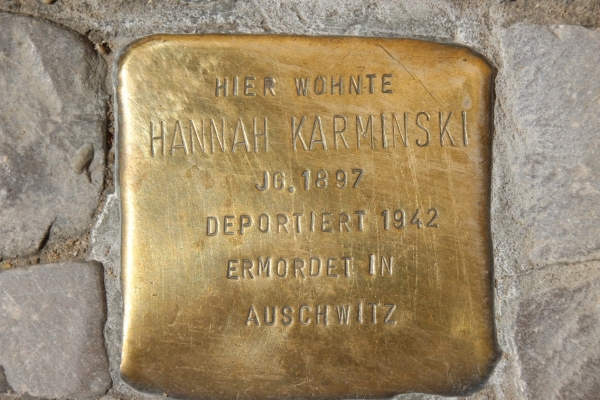BRATTLEBORO — I recently had the opportunity to join a local group of students in Berlin, Germany who were on a three-week study-abroad program on the subject of World War II, including how a country commemorates atrocities committed during its history.
As a visitor to the many memorials and monuments in Berlin, I was impressed most by the intentional ownership of the atrocities that took place during the reign of the Nazi regime.
The Holocaust Museum, for example, is actually called the Memorial to the Murdered Jews of Europe. This genocide consisted of the murder of six million out of the nine million Jews living in Europe at that time.
The Gestapo headquarters museum is known as the Topography of Terror. The display of information at this site near Check Point Charlie adds to clearly stated intentions of never forgetting the repression and systemic horror that occurred.
A monument - the Memorial for the Victims of Nazi Euthanasia Program - includes graphic detail of the 200,000 to 300,000 mentally and physically disabled people, including many children, whom Hitler killed with lethal injection, starvation, or gas because they were deemed incapable of being productive in society.
The Memorial to the Sinti and Roma Victims of National Socialism in the Tiergarten described the genocide of 220,000 to 500,000 European Sinti and Roma people, also murdered under Hitler.
The Memorial to the Homosexuals Persecuted Under the National Socialist Regime provided a reminder of the atrocities committed against the LGBTQ population and makes one consider the current persecution that continues globally.
Another form of memory found in Europe are more than 61,000 stolpersteins, or brass-plated “stumbling stones,” which have been placed throughout Europe to commemorate victims of the Nazi holocaust (Jews, Roma, Sinti, homosexuals, dissidents, Jehovah's Witnesses and victims of euthanasia) who were deported. Dates of their extermination or liberation are also included.
These stones - collectively, the largest decentralized memorial in the world - are placed in front of the known home or workplace where the person was last freely located.
And even on a relaxing ferry tour down the Spree River, the guide provided oral history about a prison we passed, Plötzensee, and mentioned the 3,000 dissidents executed there during the Nazi regime.
At all of these sites, there was no denying the level of racism and anti-Semitism that existed and how these attitudes led to complicity in the genocide of far too many people.
* * *
Upon my return to the United States, I had the opportunity to travel to Washington, D.C. I was struck by the differences in how the stories of history are told.
Although I was unable to explore the National Museum of African American History and Culture to see how the story of slavery was historically depicted, I did get a chance to visit the National Museum of the American Indian. Having walked across the country for Native American rights in 1984, I was dismayed at what I saw as a sanitized history of what happened to these Native nations.
Yes, there was an exhibit, “Nations to Nations,” that displayed how treaties were created and promises broken. There was a brief film about the lopsidedness of these treaties and the bribery involved. The exhibit acknowledged the perception at the time of Native Indians as “savages.” It offered a little history about the Trail of Tears and the dislocation of people from their lands.
But nothing prepared me for the lack of information about who was responsible for the devastation of the culture of Native Americans.
There seemed to be plenty of explanation as to why those taking the lands, by force or fraud, felt it was their God-given right to do so and how the “Indian Problem” resulted in removal of people from their lands in exchange for their sovereignty. Some quotes of resistance to these policies were provided, but little on how this resistance was ignored or crushed.
Although there is academic debate about whether the Native Americans' experience in the United States constitutes a genocide, it is clear that they were victims of racism that included methodical and violent efforts aimed at eradicating their culture and stealing their land.
The use of torture, abuse, killing of tribal members, mandating children to boarding schools, forced sterilization - all of this and more were part of the colonization of this country.
* * *
This is not to compare one atrocity to another or to claim equity on any level, nor do I mean to diminish the positive aspects of the Museum of American Indians. The building itself is a beautiful piece of art, and the artifacts on display help depict important cultural history for visitors to appreciate.
The museum also celebrates the survival of American Indians and how important aspects of their culture remain despite the many atrocities committed against them.
And it may not be the goal of this museum to tell this part of the story. I just wish it were more evident in our national museums and monuments what role colonists played in this devastation.
Steps such as correcting our history books and celebrating Indigenous People's Day in place of Columbus Day are positive movements toward healing and awareness. Memory, commemorating, and storytelling are also important if we are to stay vigilant and not repeat history.
This has been exemplified with recent debate over slavery and how its history is not well represented in this country. Owning our history might not eliminate all racism or anti-Semitism, as both still exist in Germany and in the U.S. It does, however, raise awareness and vigilance so that as individuals and as a country, we continue to resist sanctioned discrimination or persecution.
As Holocaust survivor Elie Wiesel wrote: “Let us remember: what hurts the victim most is not the cruelty of the oppressor, but the silence of the bystander.”
Only by understanding and truly owning our history can we best not repeat it, promote healing, and learn to move forward.
